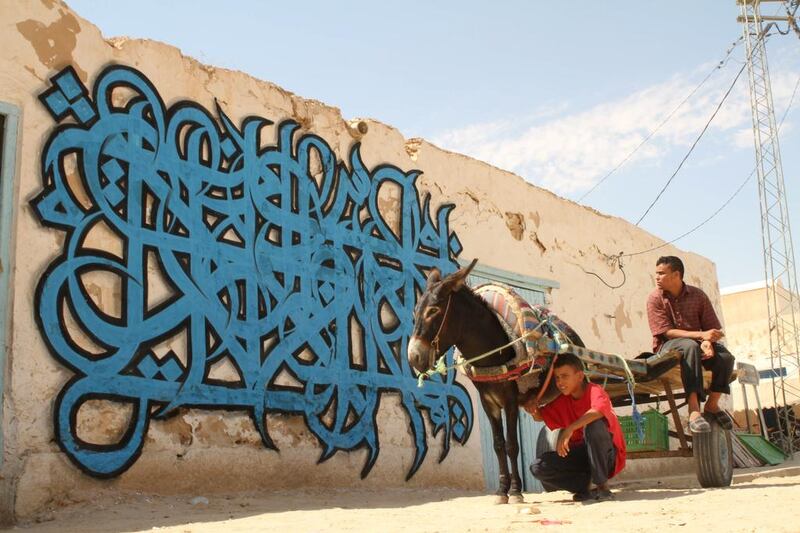Try to imagine for a moment, a world in which there was only one font, most likely the generic Helvetica New, for everything from shop awnings, to book covers, road signs, and even jars of jam. Even though we might not always notice the creative impact of font (or “typography”, if you’re using the technical design term), in our everyday lives, our days would be nothing short of drab without it. I shudder to imagine!
Arabic is one of the world’s most ancient and poetic languages and there is a rich tradition of Arabic calligraphy that dates back thousands of years and forms the basis for many of today’s fonts. However, it has only been very recently that a variety of typographies came into the picture in Arabic design, perhaps propelled by the rampant use of computers. Now Arabic typography and designs that incorporate the language in a variety of curious, beautiful, or clever ways have become all the rage with artists like eL Seed (a street artist whose calligraffiti designs marry Arabic calligraphy and graffiti) and designer Nadine Kanso, whose Bil Arabi range speaks to the strong woman with bold Arabic letters frequently cast in gold or pave jewellery.
Letters to Wear is an open competition that calls on the region's artists, typographers, and creatives, to conceive a unique Arabic typography (or in laymen's terms, a complete Arabic font), which could be incorporated into Arabesque charms that will compliment Baraboux bags, a regional accessories range based in Saudi Arabia under the Creative Direction of HRH Princess Reema Bandar Al Saud. The competition marks a collaboration between Baraboux and The Khatt Foundation, a marvellous cultural resource based in Beirut devoted to advancing Arabic typography and design throughout the Middle East and beyond.
The Khatt Foundation’s director, Huda Smitshuijzen AbiFares, has published multiple books on the subject of Arabic typography. “Every Arab designer loves calligraphy,” she says. “For me it came with my love for drawing and dancing. When I was a kid we had a ceramic plate on my bedroom wall with the inscription ‘Insha’ Allah’. I think this image must have been imprinted in my subconscious and may have been my first initiation into the world of calligraphy, typography, and design.”
If you are a native Arabic speaker or are simply drawn to the romantic curves and unusual connections between the letters, the Letters to Wear competition may just be your rainbow connection towards launching a career in Arabic typography and design. The winning designer will receive a prize of 10,000 Euros, a realised collection with Baraboux, and recognition at the upcoming 2015 Design Days fair in Dubai.
High profile jurors include HRH Princess Reema Bandar Al Saud, Huda Smitshuijzen AbiFares, eL Seed, Nadine Kanso, and designer Rana Salam.
Are you a non-native Arabic speaker? To learn more about Arabic typography you will first need to master the written language and basic calligraphy principles before adventuring out in the direction of inventing your own font. If you’re as font-obsessed as I am, you might consider picking up a copy of Arabic Type Design For Beginners: A Guidebook by Huda Smitshuijzen AbiFares, or keeping your eyes open for fairly regular workshops offered around town at art spaces like Tashkeel.
* For more information about the Letters To Wear competition visit this page. The deadline is December 15th.
Danna Lorch is a guest blogger for The Art Blog. To read more about her and other cultural posts visit her blog: dannawrites.com





